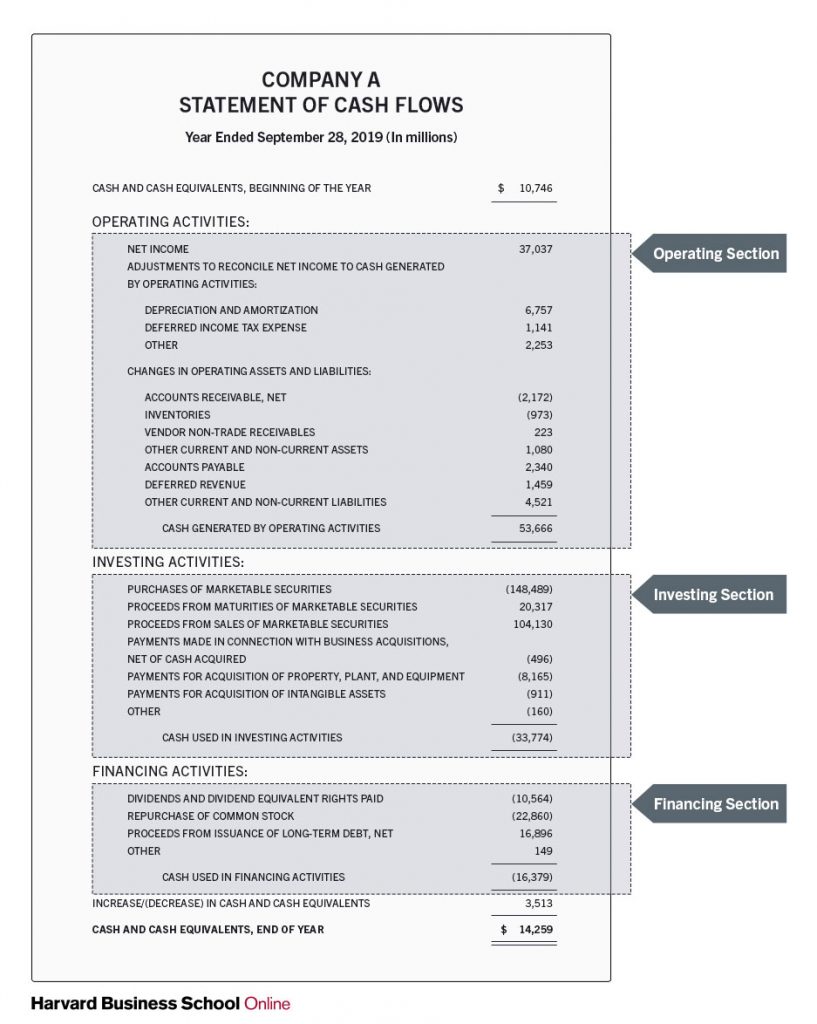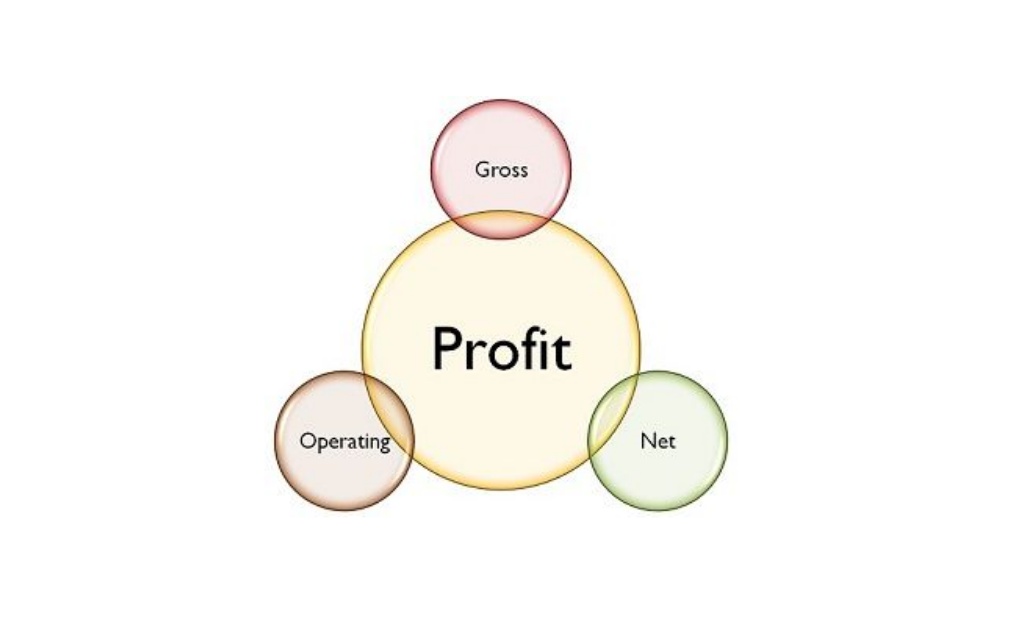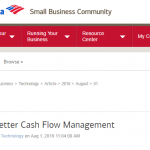Understanding Cash Flow VS Profit in your Small Business
As the saying goes “cash is king” and this certainly rings true for startups and small businesses. When there’s money in the bank, it can feel like the business is booming and you can tackle any challenge. And when it’s not, tough sacrifices may need to be made.
It doesn’t matter how much revenue you are owed, if you don’t have cash flow, you can’t keep a business afloat, although, cash flow alone is a full proof indicator that a business is earning a profit.
This can confuse many small business owners. And unless the founder or business owners come from a financial background, they sometimes make the assumption that all cash flow is profit, but cash flow and profit are two different animals so to speak.
It’s imperative for a small business to understand the difference. I recently read an article about this topic published in American Express business trends.
What is Cash Flow in Business?
Over the last few years, I have written articles related to managing cash flow in uncertain times, cash flow management metrics, calculating startup cash burn rate, Cash flow is simply the money flowing through the business. As cash is constantly moving into and out of a business. For example When a retailer purchases inventory, for example, money flows out of the business toward its suppliers. When that same retailer sells something from inventory, cash flows into the business from its customers. When the retailer pays its workers or utility bills, cash flows out of the business, toward its debtors. When the retailer collects a monthly installment on a purchase that a customer financed 18 months ago, cash flows into the business.
An article in Harvard Business School Online states “Cash flow refers to the net balance of cash moving into and out of a business at a specific point in time.”
Now, of course, cash flow can be positive or negative. Positive cash flow: indicates that a company has more money moving into it than out of it. Negative cash flow: indicates that a company has more money moving out of it than into it.
The Amex article points out that “cash flow is tracked in a cash flow statement that records all sources of cash received and spent over that time.” The statement should be organized under three categories:
- Cash from operations – this section includes all revenue generated and all operating expenses including depreciation of assets.
- Cash from investments – this section includes any cash acquired or used for the purchase or sale of assets or other investments.
- Cash from financing – this section covers cash flow related to transactions for long-term funding, including the sale or repurchase of company stocks, and debt repayment.
The sum of all three categories is your cash flow for that period.
 The Cash Flow Statement
The Cash Flow Statement
As I just mentioned cash flow is typically reported in the cash flow statement, a financial document designed to provide a detailed analysis of what happened to a business’s cash during a specified period of time.
Why is cash flow important?
By keeping tabs on your business’s cash flow, and comparing cash flow statements over time, business owners can identify trends, align payments to ebbs and flow, and avoid financial choices that will lead to a financial crisis. For example, if the cash flow statements show the company always has a cash flow crunch in April, the business can proactively bank additional cash, or pay bills early to cover that gap.
Marty McCaffrey, founder of a Chicago-based CPA firm told Amex “cash flow is the lifeblood of your business, It doesn’t matter if a business is profitable or not if you don’t have the cash to pay your bills you won’t stay in business.”
Though, cash flow alone doesn’t tell you the whole financial story and can be seen as a lagging indicator of financial health. Revenue payments are typically made weeks or months after goods are manufactured and sold, or services are rendered. Similarly, purchases made on credit won’t impact cash flow immediately but will affect future cash flow and bottom-line results.
A company’s profitability, when viewed in combination with cash flow, provides a clearer and more accurate picture of financial health. It’s also worthwhile to point out that cash flow is different from profit, which is why a cash flow statement is often interpreted together with other financial documents, such as a balance sheet and income statement.
WHAT IS PROFIT?
 Profit is typically defined as the balance that remains when all of a business’s operating expenses are subtracted from its revenues. It’s what’s left when the books are balanced and expenses are subtracted from proceeds.
Profit is typically defined as the balance that remains when all of a business’s operating expenses are subtracted from its revenues. It’s what’s left when the books are balanced and expenses are subtracted from proceeds.
Profit can either be distributed to the owners and shareholders of the company, often in the form of dividend payments, or reinvested back into the company. Profits might, for example, be used to purchase new inventory for a business to sell, or used to finance research and development (R&D) of new products or services.
Like cash flow, profit can be depicted as a positive or negative number. When this calculation results in a negative number, it’s typically referred to as a loss, because the company spent more money operating than it was able to recoup from those operations.
Like cash flow, profit can be further broken down into three categories:
- Gross profit – gross profit is defined as revenue minus the cost of goods sold. It includes variable costs, which are dependent upon the level of output, such as cost of materials and labor directly associated with producing the product. It doesn’t include other fixed costs, which a company must pay regardless of output, such as rent and the salary of individuals not involved in producing a product.
- Operating profit – like operating cash flow, operating profit refers only to the net profit that a company generates from its normal business operations. It typically excludes negative cash flows like tax payments or interest payments on debt. Similarly, it excludes positive cash flows from areas outside of the core business. It’s sometimes referred to as earnings before interest and tax (EBIT).
- Net profit – this is the net income after all expenses have been deducted from all revenues. Typically, this includes expenses like tax and interest payments.
Last summer I write an article about understanding gross and net profit margins, Gross profit is the revenue you make on a specific product or service by subtracting the cost of producing that good from the revenue generated. If a widget costs $50 to make and you sell it for $100, your gross profit is $50.
Gross profit is a useful tool to see which of your products or services are most profitable, how much profit you are making off of these products, and wherein your business revenue is being generated (or lost). However, gross profit is not a measure of your company’s profitability.
Net profit is the number that tells you whether your business is profitable or losing money. Net profit (also known as net income) is determined by calculating your gross revenue during a specific period, then subtracting all operating costs, including cost of goods sold, payroll, rent, utilities, taxes, loan repayments, and any other expenses paid.
The Difference Between Cash Flow and Profit
The key difference between cash flow and profit is that while profit indicates the amount of money left over after all expenses have been paid, cash flow indicates the net flow of cash into and out of a business.
Which Is More important: Cash Flow Or Profit?
Investors and business owners are often in search of a single metric by which they can understand the health of a company. They want to know the one number they should look at to determine whether they should make an investment, or pivot their business strategy. Cash flow and profit, as two critical and related financial metrics, often get pitted against each other: Which is more important?
There isn’t a simple answer to that question; both profit and cash flow are important in their own ways. As an investor, business owner, key employee, or entrepreneur, you need to understand both metrics and how they interact with each other if you want to evaluate the financial health of a business.
For example, it’s possible for a company to be both profitable and have a negative cash flow hindering its ability to pay its expenses, expand, and grow. Similarly, it’s possible for a company with positive cash flow and increasing sales to fail to make a profit, as is the case with many startups and scaling businesses.
Profit and cash flow are just two of the dozens of financial terms, metrics, and ratios that you should familiarize yourself with to make informed decisions about a business.











